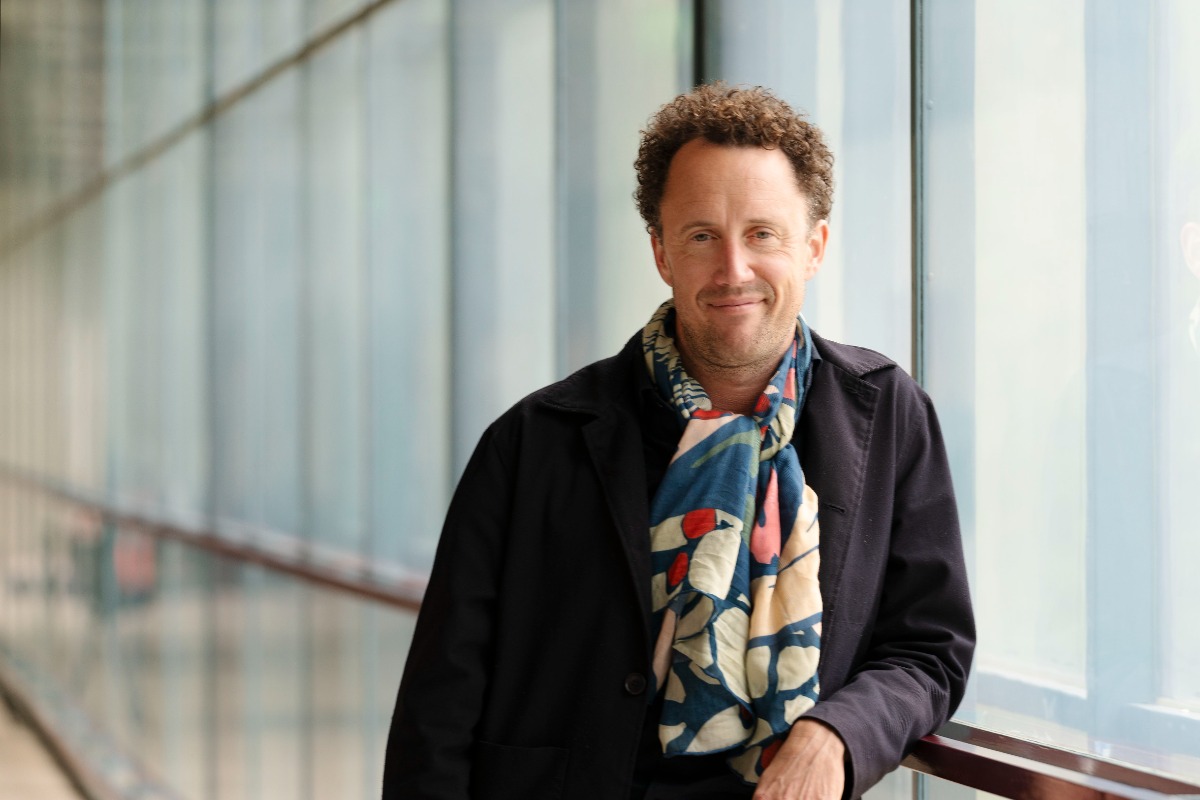
I Love a Challenge: Krist Gruijthuijsen on Leading EMMA
An interview with curator and art critic Krist Gruijthuijsen, the newly appointed director of EMMA – Espoo Museum of Modern Art
EMMA – Espoo Museum of Modern Art, Finland’s largest art museum – has recently appointed Krist Gruijthuijsen as its new director and CEO. He will assume the position on October 1. Founded in 2006 and located in Tapiola, Espoo, EMMA hosts six exhibitions annually, alongside permanent displays of art and design. It is housed in the Exhibition Centre WeeGee, a building complex which in addition to EMMA contains the City Museum of Espoo, a modern art gallery, a media-art centre and an art school.
WeeGee Architecture © Ari Karttunen / EMMA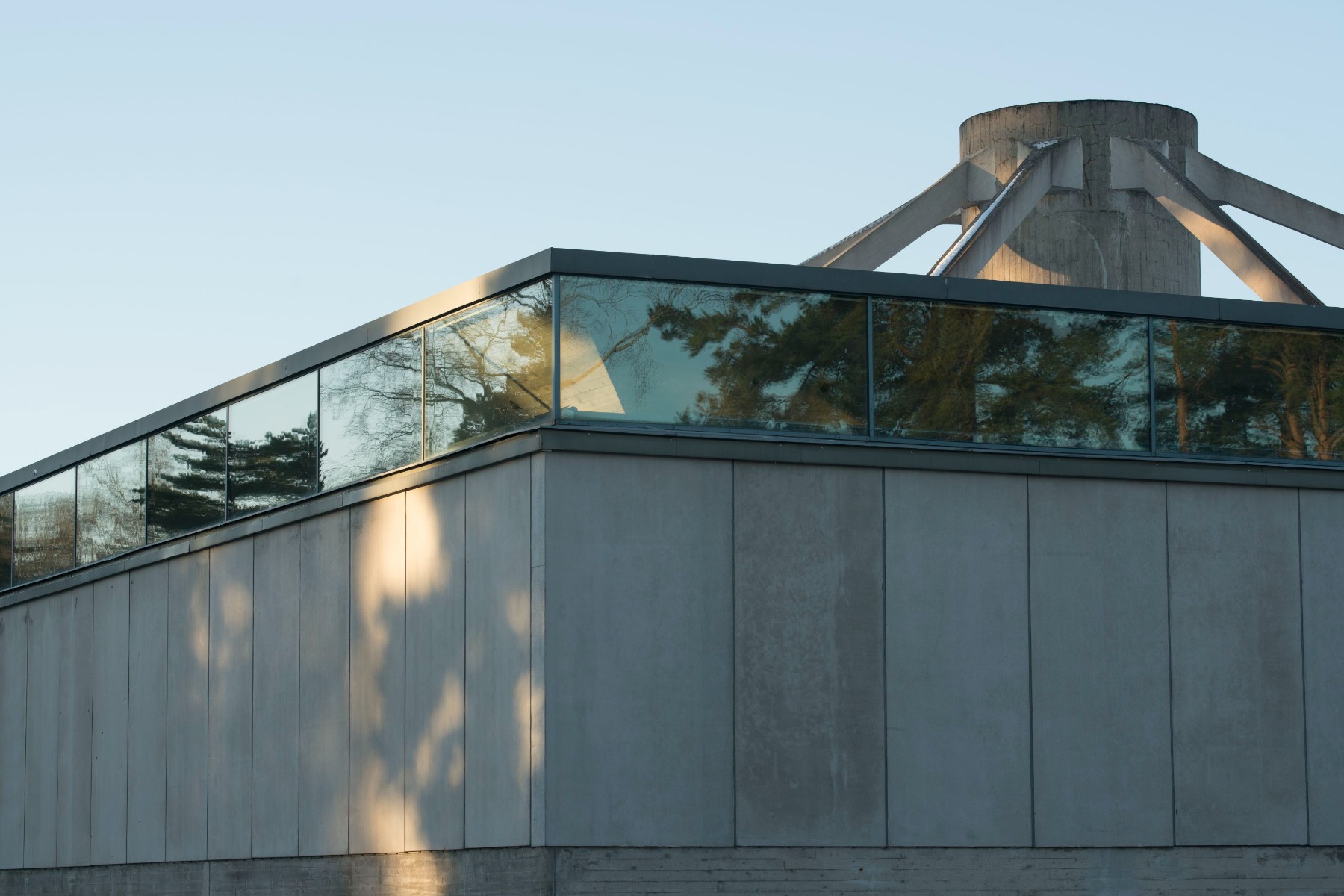
Curator and art critic Krist Gruijthuijsen has been the director of KW Institute for Contemporary Art in Berlin from 2016 to 2024. He curated exhibitions by Hanne Lippard, Ian Wilson, Adam Pendleton, Willem de Rooij, Beatriz González, David Wojnarowicz, Hreinn Friðfinnsson, Hassan Sharif, Leonilson and Martin Wong among others. He was also a member of the international jury of the Purvītis Prize in Riga in 2023, when Ance Eikena won the award.
‘I am excited by EMMA’s ambitious, flexible and forward-thinking attitude,’ Gruijthuijsen said of his new appointment. ‘With its international multi-disciplinary program and striking architecture, the museum has become an established institution in the region. EMMA’s location at the crossroads of Scandinavia and the Baltic States offers a strong geopolitical context, full of potential and opportunities.’
What new possibilities could this bring for artists from the Baltic States? What role will EMMA take in the broader cultural system of the Nordic countries? And how does Krist Gruijthuijsen see the place and mission of a contemporary museum in a country that, much like the Baltic States, is now often perceived as a frontier? That’s what I wanted to talk about with the new director of EMMA – but our conversation began from a very different point. Krist told me:
I’m not sure if you know this, but I spend quite a bit of time in Latvia. I’ve been helping to restructure the Pāvilosta Artist-in-Residency (PAiR) programme. A few months ago, I spent a week in Pāvilosta and another week in Riga, and I’ve been going back and forth ever since – and I’ll be coming even more often in the future.
Social Fabric © Paula Virta / EMMA – Espoo Museum of Modern Art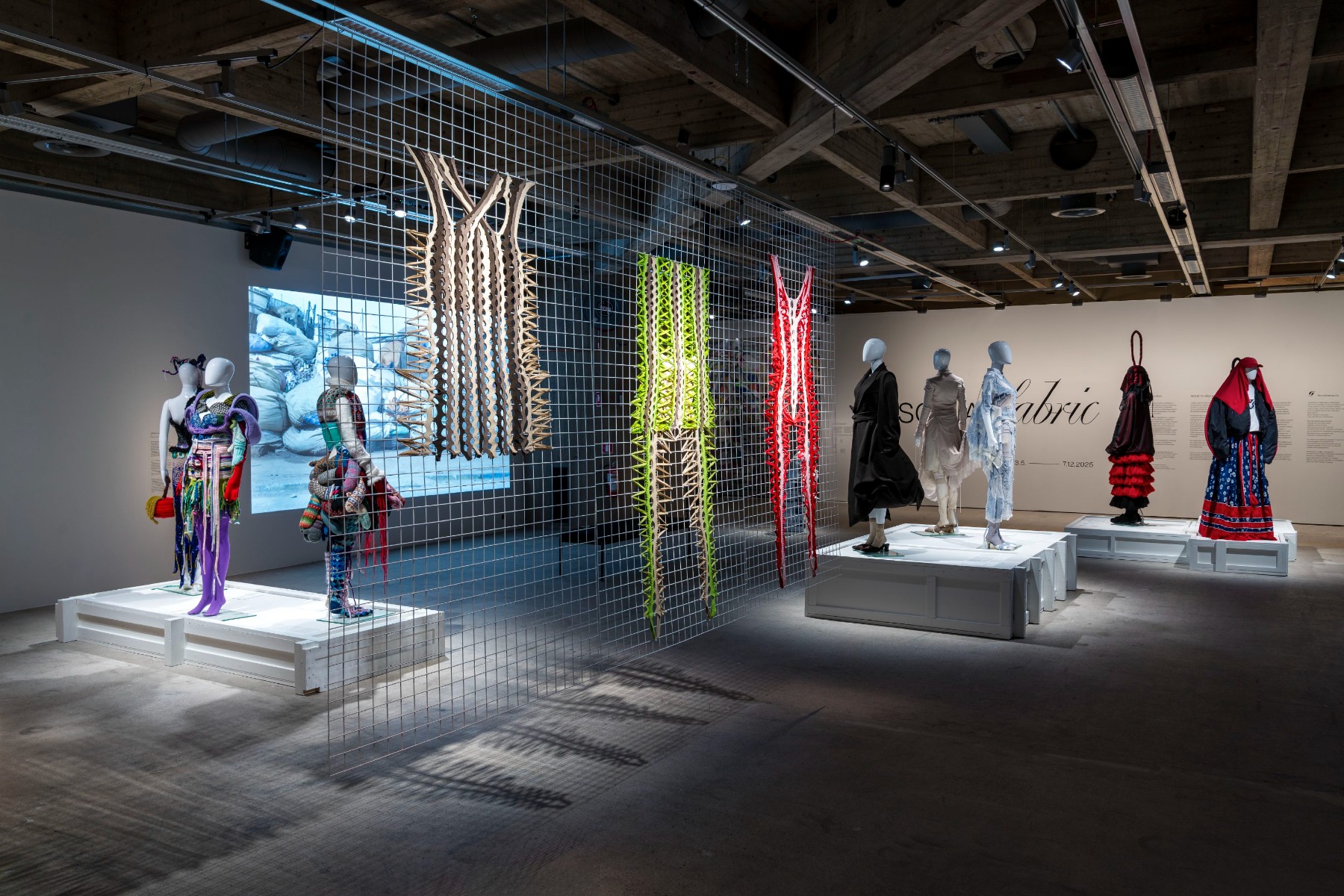
Could you tell us more about your mission in Pāvilosta?
I’m working as a kind of curatorial advisor. Together with Vita Liberte and Vilnis Štrams, I help select the residents and shape the programme. Starting next year, the programme will essentially be organised with my involvement.
But you were also on the jury for the Purvītis Prize two years ago?
That's how I met them.
What was your impression of Latvian art and the artists nominated for the prize?
It’s interesting – this year we also did studio visits, and I noticed that many artists are still very engaged with the past. Their work often has a serious tone, reflecting on both personal heritage and the country. Compared to the other Baltic countries, Latvia feels quite different – more closed off, in many ways. Of course, there are reasons for this, but it affects how artists view the world. From my perspective, Latvian artists tend to have a more introverted way of looking at things. This is my external point of view.
Do you think Estonian artists, for example, are a bit more extroverted in their approach?
Definitely. I think Estonia sits somewhere between Latvia and Lithuania. Lithuania tends to be the most open-minded in its view of the world – less self-reflective and more narrative, even a bit fantastical in how it connects ideas.
All the Baltic states have long been of interest to me. While running a master’s programme in Amsterdam, we often included Baltic artists and I had several commitments which each of the couuntries. So there’s a long-standing relationship, and part of my upcoming role will be to strengthen that relationship.
Exhibition Centre WeeGee © Ari Karttunen / EMMA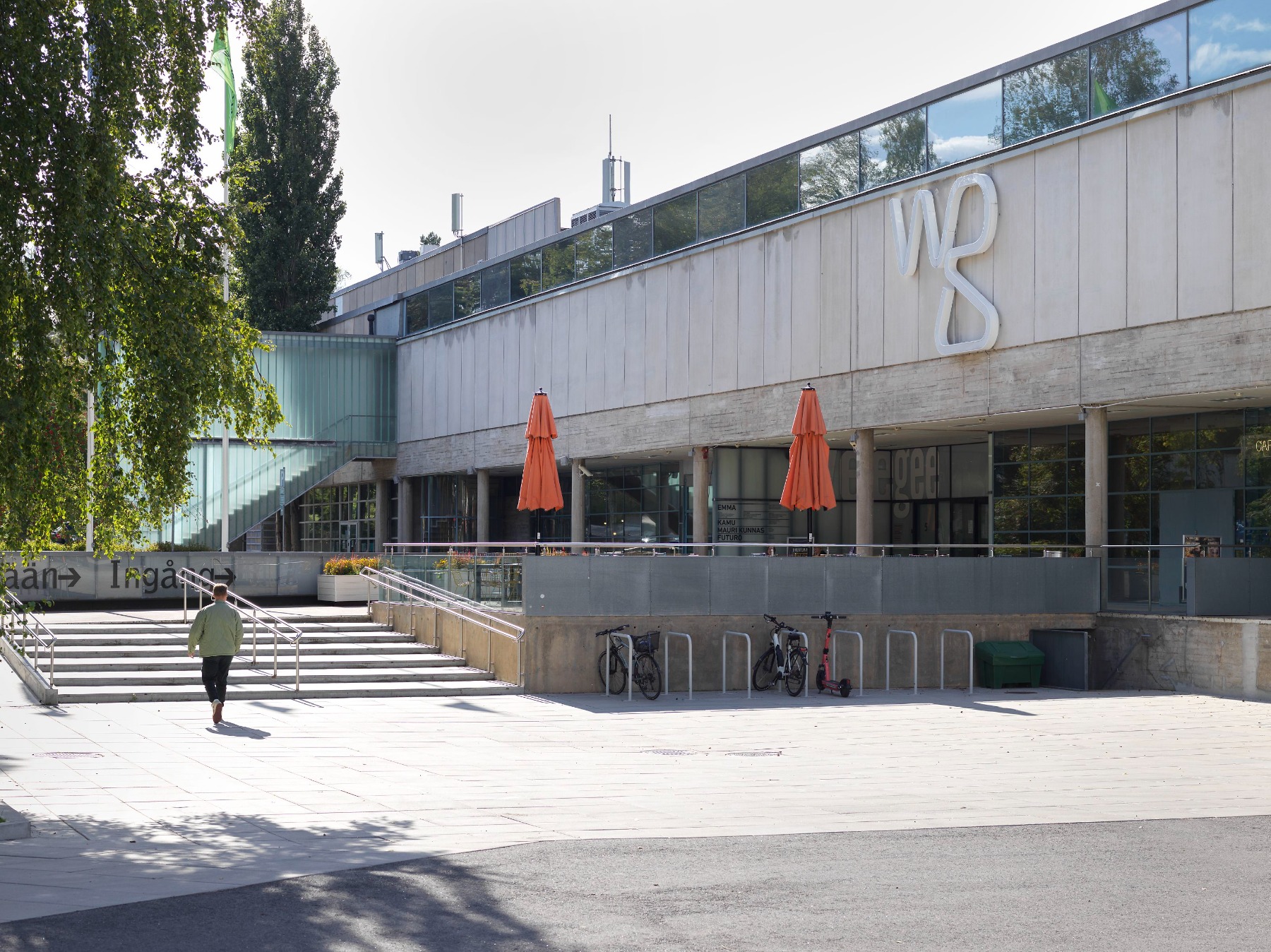
That’s something I’m really curious about too. Do you already have any concrete plans, or is it more of a future goal?
Well, I’m one of the first international directors in Finland. They specifically sought an international perspective to move away from a relatively insular conversation. Finland already has an international dialogue on many levels, but having an external person look at its cultural heritage and contemporary production – both in art and design – can be very productive. It allows you to ask questions. I understand that this is culturally infused, and I’m not here to change that. There is some exchange between Finland and the Baltic States, but this can be much stronger. And if you look beyond the region, it’s clear that the mindset around this needs broadening.
I’m Dutch, which is a very small country. For us, an hour and a half by train feels far. But after living abroad for decades, that seems small. For example, in Germany it’s normal to take a five- or six-hour train ride. It’s really a matter of mindset and scale. When you look beyond the Nordic region, everything feels much closer and more connected, depending on what you focus on. Of course, if you turn to the Sami region, that’s a different story and a whole other conversation.
But if you zoom out and look at the region through the lens of the surrounding seas, everything is actually very close and interconnected. I find Finland particularly interesting not just because of linguistic or cultural connections, but also in terms of mentality. Finland operates in a uniquely closed-off way within Europe. With its complex history with Russia and Sweden, it’s both insular and independent. I think this dual perspective – being both insider and outsider – is a real strength.
Finland sort of floats in between, which I find an interesting perspective for reflecting on the whole region. That’s part of my plan: while I bring my own interests, the first few years will be about absorbing what’s already there, understanding what’s missing, and learning what people in Finland want. At the same time, I aim to develop this museum – a very ambitious and beautiful institution that is still relatively unknown internationally – as a very clear team player, both locally and from an international perspective.
Monira Al Qadiri, BENZENE FLOAT (Propane), 2023 & Louise Bourgeois, From the portfolio Topiary: The Art of Improving Nature, 1988. Saastamoinen Foundation Art Collection / EMMA – Espoo Museum of Modern Art © Paula Virta / EMMA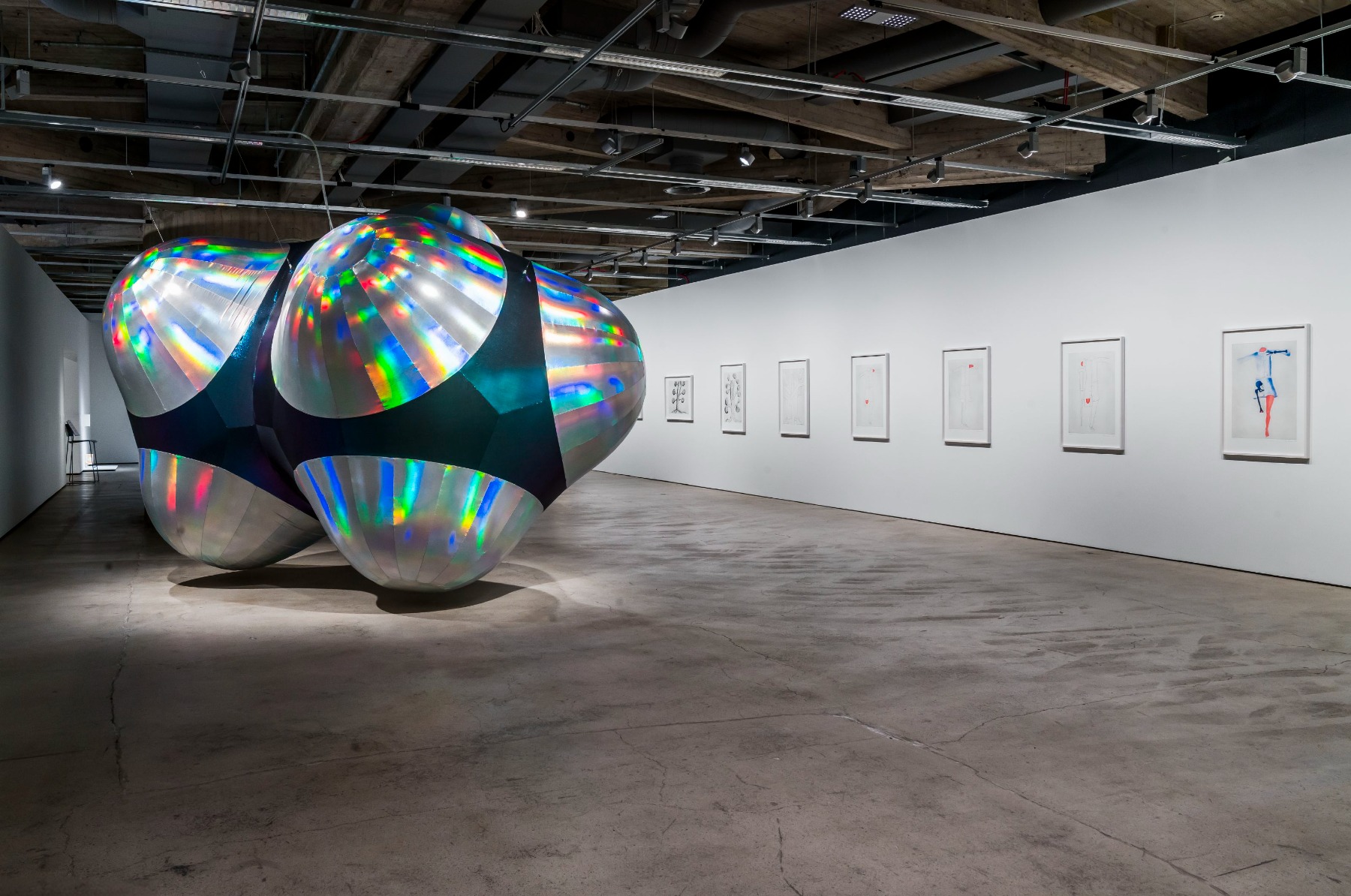
How do you see the role of the EMMA – Espoo Museum of Modern Art within Finland’s cultural landscape? And looking ahead, how do you envision its role in a broader, international context?
The museum is still quite young – it turns 20 next year. It’s been led by two Finnish directors: one for 10 years including its development, and the other for 13 years, laying the foundation to establish the museum both in the region and in Espoo. Espoo itself is a developed area on the outskirts of Helsinki that has grown into a city, but it doesn’t really have a central core. It’s a bit like Berlin in that sense – a collection of neighbourhoods rather than a single city centre.
As a friend of mine said, Espoo is the ‘periphery of the periphery of the periphery.’ So, you have Europe, then the northern part of Europe, which is already kind of peripheral, then Finland, which is peripheral in the Nordic region, then Helsinki, and then Espoo, which is peripheral to Helsinki. When visitor go to Helsinki, they certainly don’t go to Espoo – it’s not really a tourist attraction. For me, it’s about understanding what the function of the museum in this specific area. It’s housed in an industrial landmark building from the 1960s, an incredible brutalist structure with 6,000 square meters of open space on each floor. It used to be a printing company, and, like many buildings in Finland, it even has a sauna – in the basement, along with a derelict swimming pool that the City of Espoo is planning to reinstate. It’s interesting because it had a public function, which is something to consider post its printing era. Just to be clear, it’s one building, but it houses several museums: EMMA – Espoo Museum of Modern Art, the City Museum of Espoo among others.
An important part is the Saastamoinen Foundation Art Collection, which has one of the most prominent contemporary and modern art collections – over 3,000 works – all stored and hosted by the museum. You also have the Ruth Bryk and Tapio Wirkkala archive and collection, hosted here as well; they’re two prominent designers. And then there’s is a deposited selection of 1,400 works of glass and ceramic from Collection Kakkonen, the largest and continually evolving private collection of design in Finland, now around 10,000 works. I’m just giving a few examples of the many different agendas of people who deposited works to the museum. My goal is to make a better sense of this.
The idea is to create a coherent narrative – covering both the history of design and modern and contemporary art in Finland and internationally – so that when you visit the museum, it feels like one unified story. I think my naive outsider perspective can really help with that. Then, I also need to understand more clearly what this museum represents within Finland.
It’s about broadening the perspective beyond the Nordic region. If you look at this part of the world, this museum – with its unique mix of design and contemporary art – could produce shows that travel to very different parts of the world. My goal is to open those conversations, to look beyond the usual routes. I know it sounds a bit generic, but it’s important to start seeing Espoo or EMMA as a place where shows are created or presented that represent the whole region.
Collection Kakkonen © Ari Karttunen / EMMA – Espoo Museum of Modern Art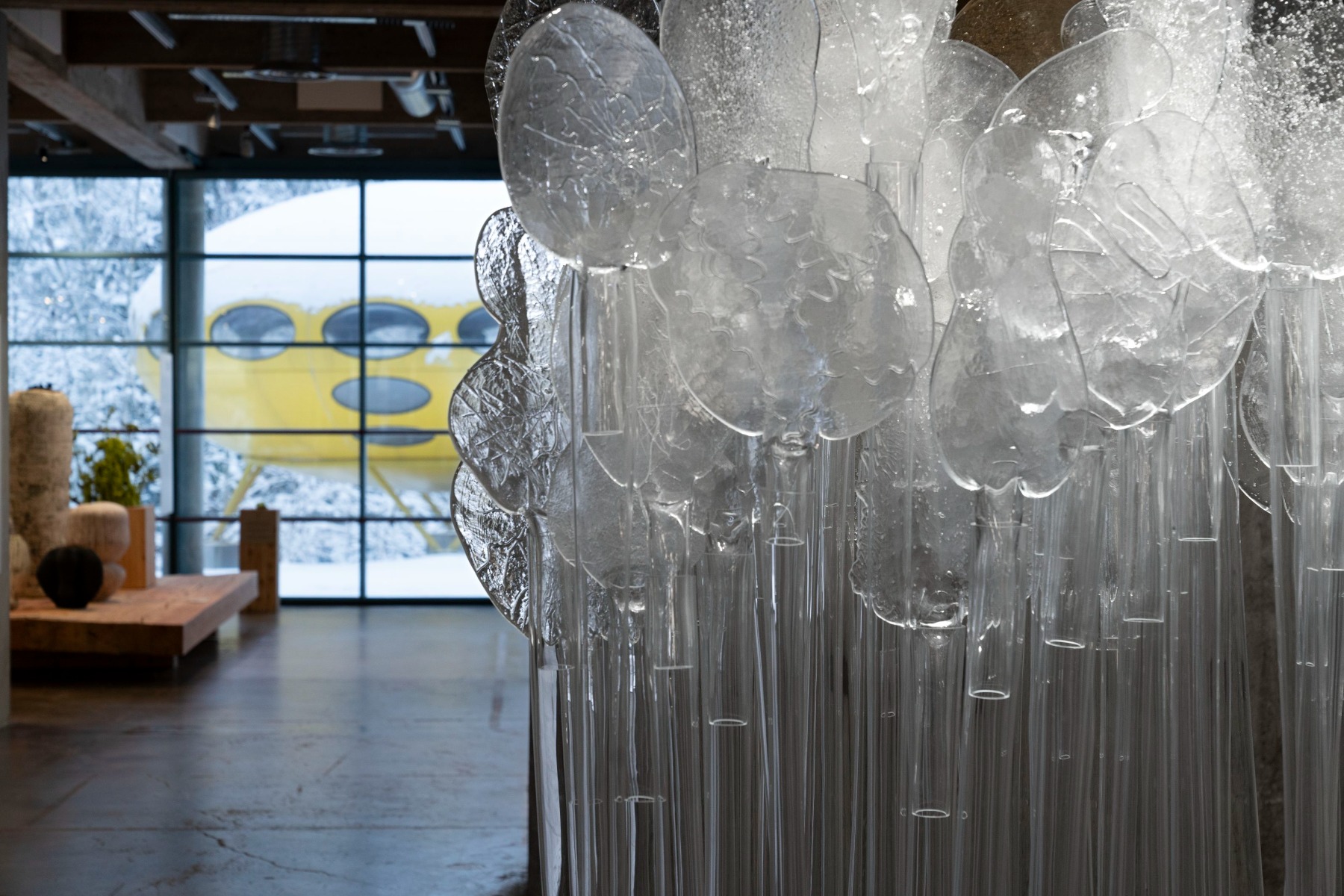
When you started your job at KW Institute in Berlin, you already had extensive curatorial experience in different institutions. Still, it must have felt like quite an interesting mission.
I was 35 at the time when I started at KW. I came from Graz – the Grazer Kunstverein is a small institution with just three employees – where I had just completed an extension and renovation. Then I arrived at KW with, well, not exactly a blank sheet, but more like a restart.
It was a huge challenge to get the place back on track and, as they say, professionalize it – to make it healthier on every level, not just in terms of the programme. What I learned there was how to delegate, but also how to understand things better.
Of course, I came in with all my curatorial ideas, but once I arrived, they didn’t really make sense. After a year and a half, they didn’t feel connected to Berlin – they could have been applied anywhere. I learned during that time to focus on what was missing in the Berlin context, and what could serve as a portal for international conversations that hadn’t happened yet. One of the things I’ve always done as a curator – and I know it’s very ‘en vogue’ these days – is advocate for the supposed overlooked artists and therefore, gradually adding the pieces that were missing in art history. They might be considered marginalized positions, though I’m not sure we can even use that term anymore.
One of the core elements of the programme was that it was artist-driven. That’s something I will always maintain, because I am originally an artist. The step from there to here came after eight years of producing, collaborating, and working on countless projects.
The complexities of directorship have changed tremendously over the past years, but content remains my top priority, and I continue to develop and oversee exhibitions. I don’t just focus on the administrative side of things eventhough they are essential.
This new job is a real commitment from both sides. I love adventure and love a challenge but with 60 employees who all speak Finnish – and being one of the few non-Finn – that’s going to require commitment from all of us. It’s going to be a completely new kind of challenge for me. This is a museum that, first and foremost, has done good work within Finland, but now it also needs to gain international recognition. I need to understand better what I can contribute to that process.
It’s a bit like my experience at KW. In the first year and a half, I didn’t really understand Berlin – I think I only started to get it after about four years. The difference now is that, over those eight years, I’ve learned how to let go–not just delegate, but truly listen.
MMA – Espoo Museum of Modern Art © Paula Virta / EMMA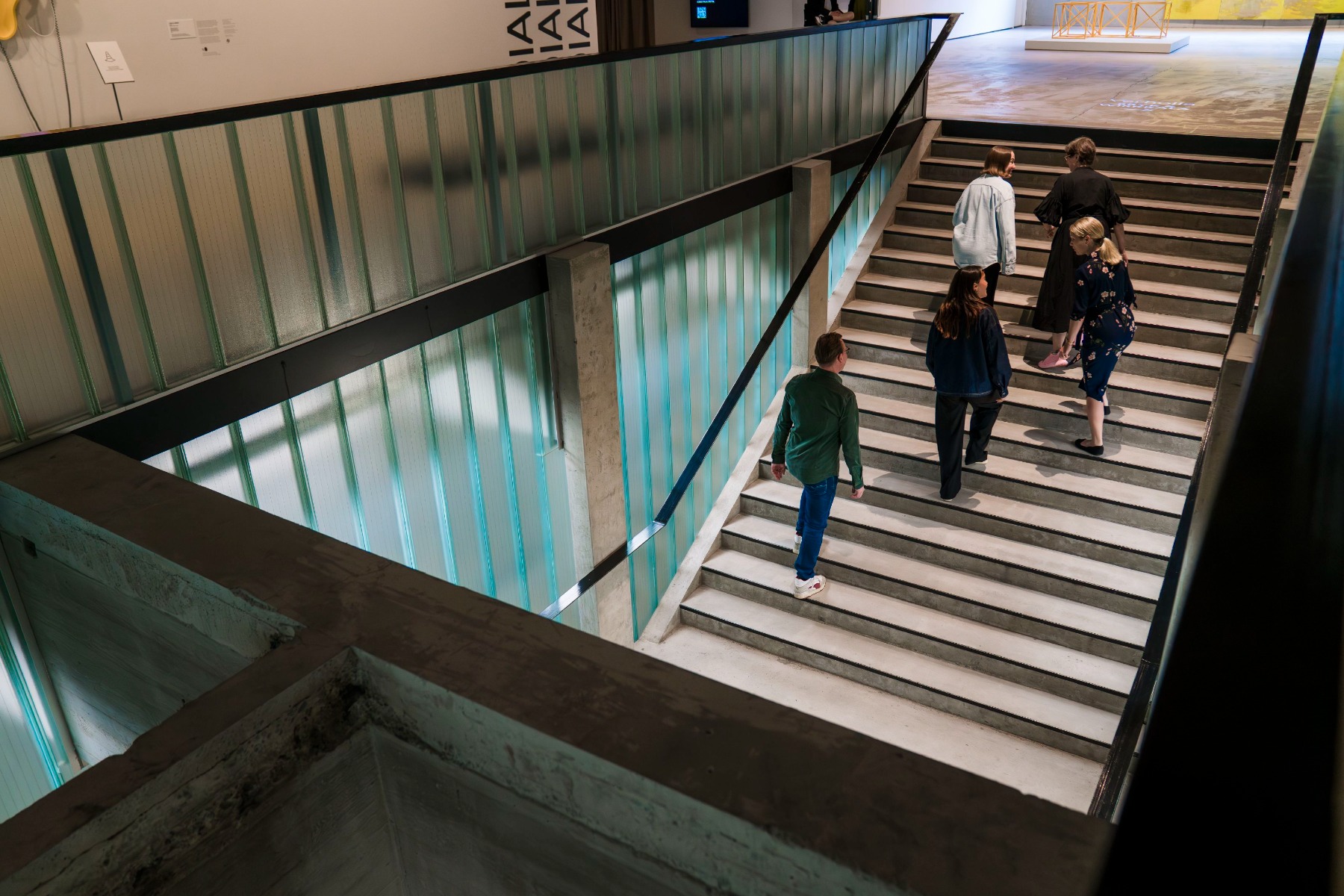
Do you also plan to change anything about the visitor experience at the museum, perhaps by organizing it differently?
I’m going to listen to the staff and see what works and what doesn’t. I plan to spend a few hours doing everyone’s job, and also spend time with the visitors, trying to understand how people experience and perceive the museum. But I also very much stay very close to how I’ve experienced my visit. For example, I’m taking a subway – how do I feel in the subway? When I get out of the subway, how am I guided to the museum? Why is all this open? Why is this closed? So, you know, very simple things – how I move through space.
I’m very intuitive and work very much with my heart on my sleeve. I want to create a meaningful experience where everybody feels welcomed but challenged.
But as I said, I haven’t started the job yet. Maybe when we speak in a year and a half, I can give you a whole different sort of perspective on it.
Arte Povera – A New Chapter © Paula Virta / EMMA – Espoo Museum of Modern Art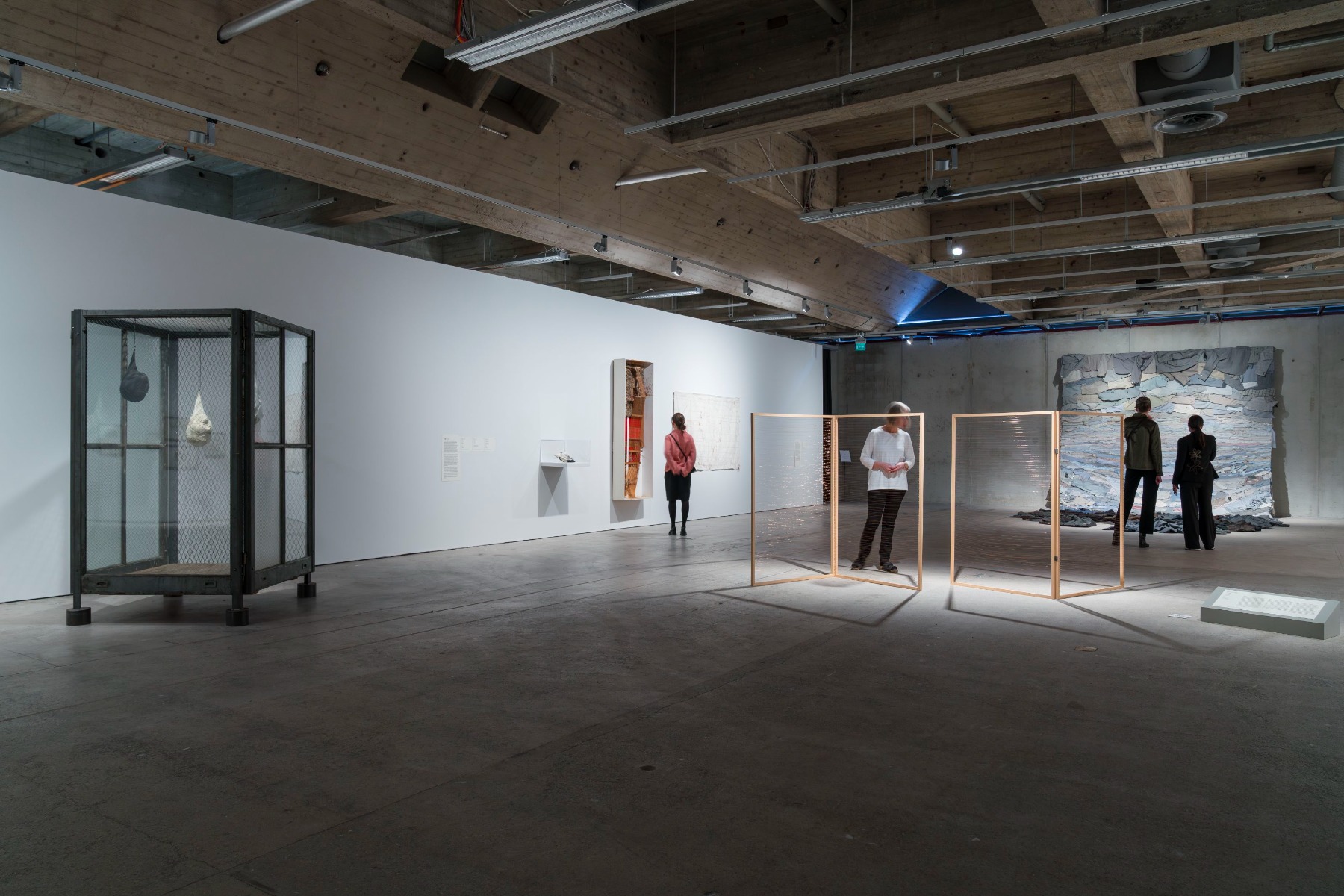
But speaking about Finnish art and showing it in the museum, while perhaps balancing it with the international scene, do you already have any ideas about how to show it or how to present it?
I would always combine things, so there would always be an international mix, along with Finnish art – not that Finnish art isn’t international in itself, but I would mix it up. Basically, I want the museum to feel like, when you visit, there isn’t this hierarchy of design versus visual art. I want it to have a more unified feel.
And I think we need to celebrate the Finnish context in a different way, also curatorially. I would like to invite more designers and artists to engage with the collections we have –whether by curating them, reinterpreting them, or exploring new boundaries between production, presentation, and curation. Also, I want to continue the legacy of my predecessor, who highlighted many overlooked aspects of Finnish art history, particularly female perspectives that had not been shown. I think it’s very relevant. There are already so many things in place, which is wonderful.
At the moment, it’s not particularly about the programme for me – it’s more about the experience of the building and create a sense of cohesiveness between all the different facets being offered. In any case, It doesn’t make sense to showcase practices that people can already seen in Paris, Berlin, or other major art centres. It has to be something really, really unique.
Krist Gruijthuijsen © Ari Karttunen / EMMA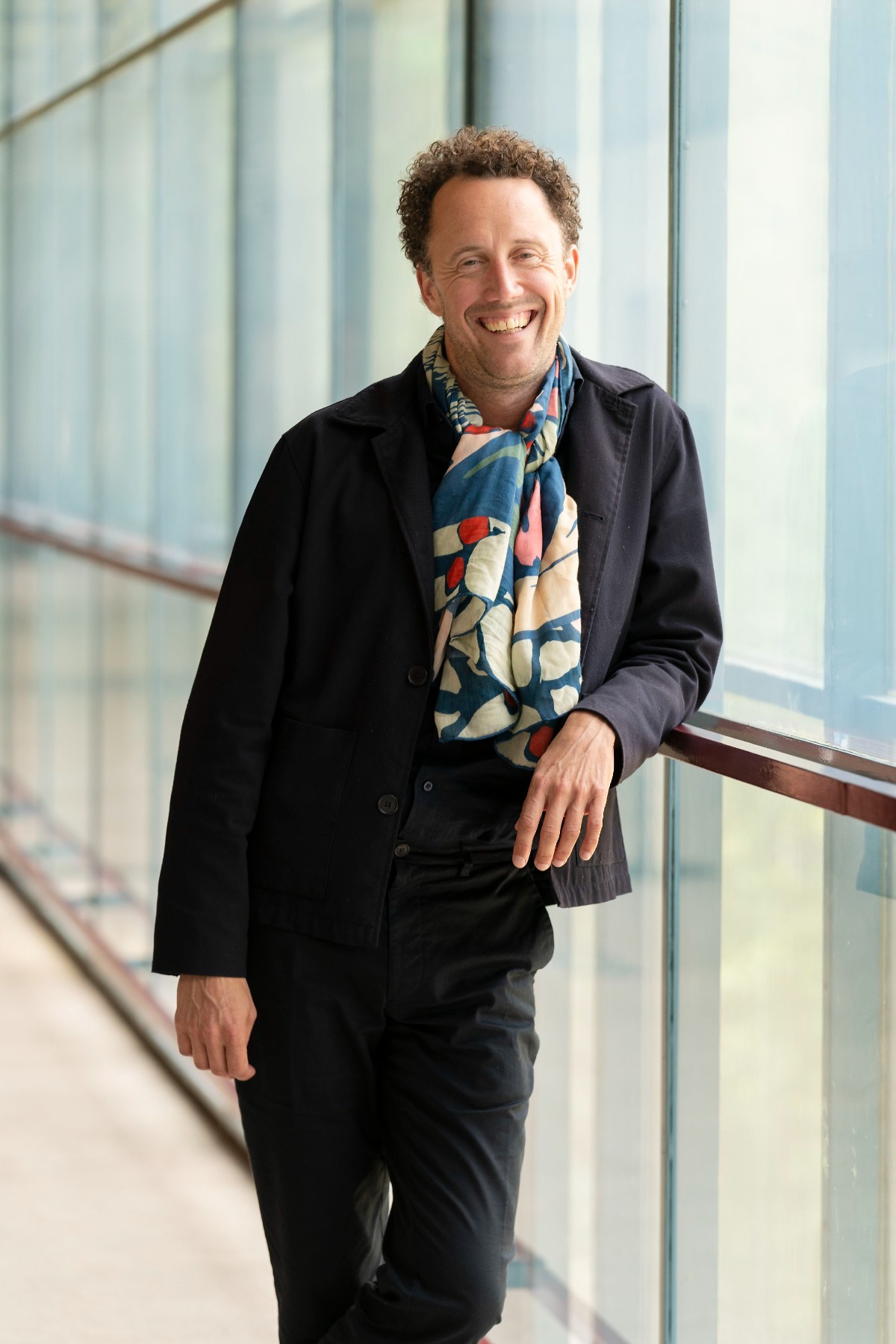
In this post-pandemic period, and with Russian aggression still ongoing in Ukraine, how do you see the role and position of a museum – particularly a contemporary art museum – evolving? What does a museum represent now, and what could it mean for people today?
Well, I think these are actually two different questions. One thing I think is really important – and this relates to what you mentioned – is that I definitely want EMMA to become more political. I’m not the type of person who just ignores the fact that, for example, Russia is only a couple of hours away. I want EMMA to be much more engaged with what’s happening around us. That’s something I feel is necessary. At the same time, I don’t want it to be a museum that is overtly politically outspoken in dictating what it does or does not do.
I do think it’s very important to underline certain things that are essential to pushing the boundaries of what a museum can do – both in its civic role and in terms of what it can offer artists. For example, one of the first initiatives I plan to implement is a fair pay system for artists. I want to explore the option of employing artists so that when they have solo shows, they receive a minimum of one year’s salary as a regular employee, including support for health insurance. The artists, particularly those I’m interested in, would greatly benefit from a year without the headache of worrying about where their income comes from.
Those kinds of things might sound small, but they’re actually quite substantial.
And of course, the civic duty of a museum isn’t just about providing information or creating magic. It’s also about understanding what this kind of institution can do to spark and support culturally and politically charged conversations. For example, we’re now in talks with the Kyiv Biennale – why not bring it to EMMA? Or trying to convince the Baltic Triennial to come here – why should it only circulate within the Baltic region? These might seem like small initiatives, but they’re both politically and culturally significant. There’s a real opportunity for the museum to engage in these conversations. It’s a place for gathering, for experimenting, for trying things out. It’s a place where there’s no censorship and you can explore freely. I will always try to shelter people who want to come together and discuss certain matters. The goal is to create a welcoming environment for dialogue and engagement.